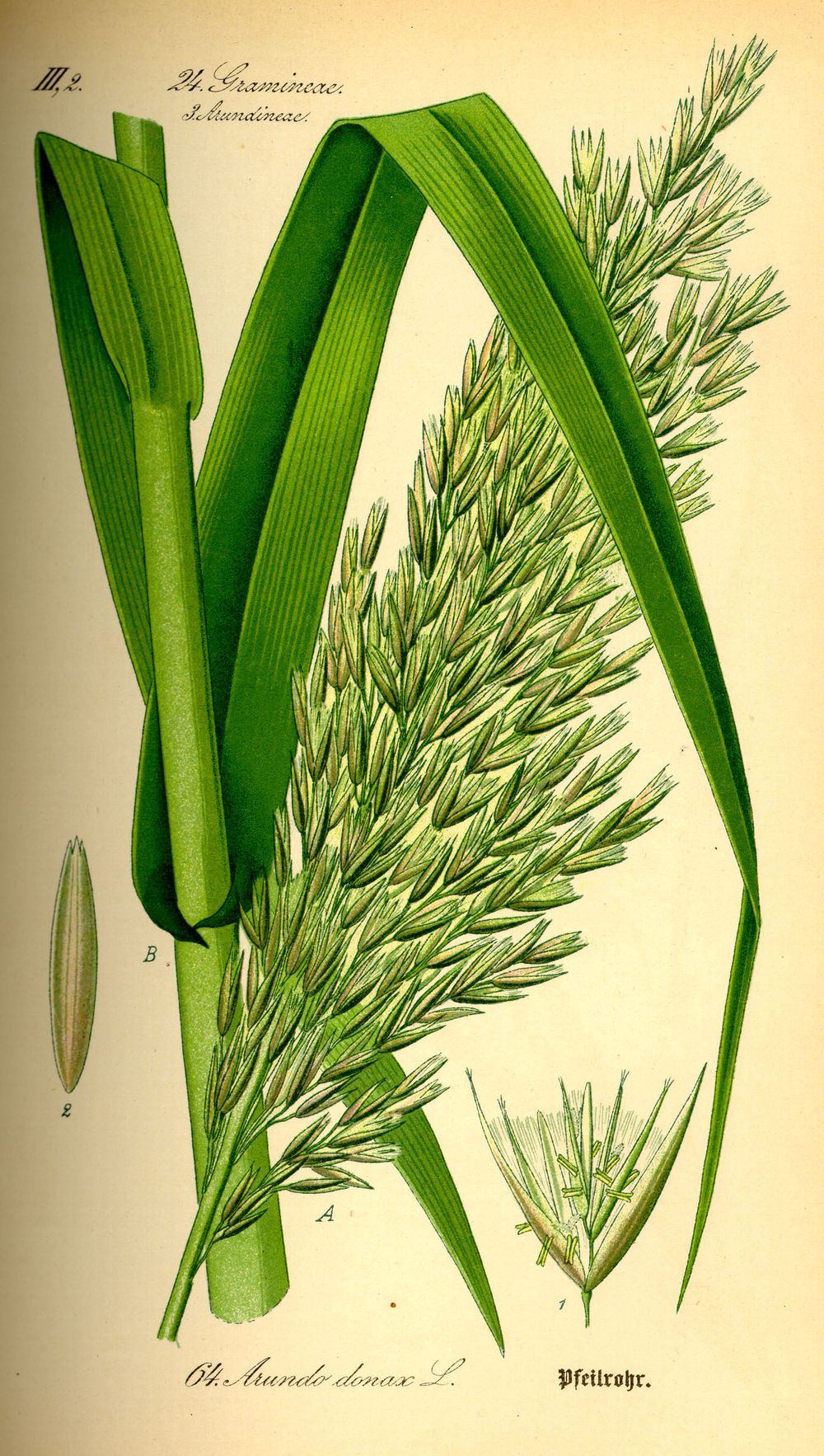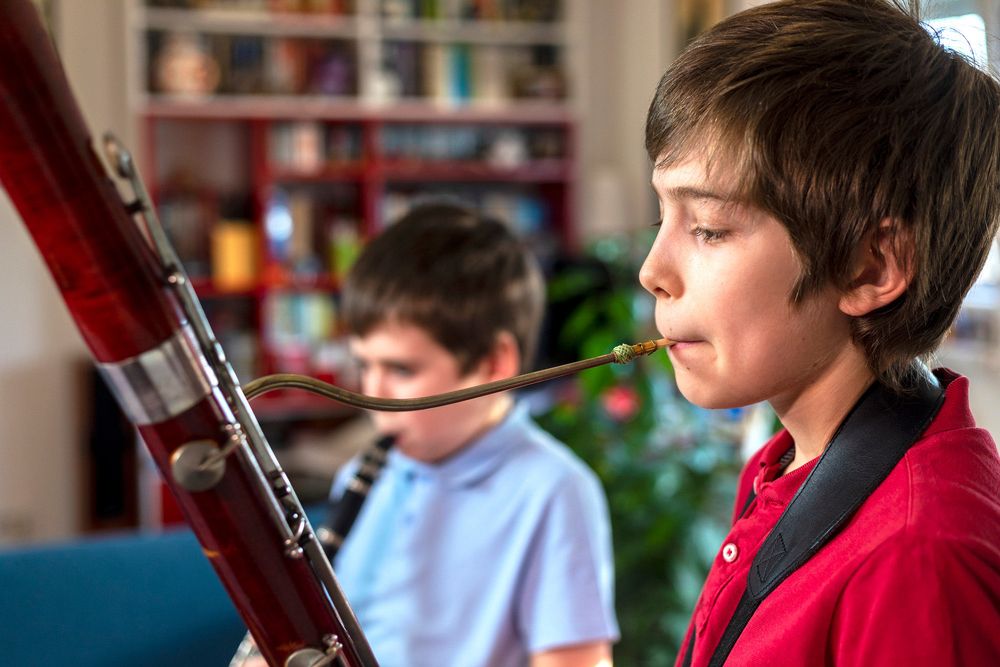7. Generating sound on the bassoon: The double reed
The double reed, simply known as the "reed," consists of two freely vibrating blades made from cane reed - a type of reed from the Mediterranean region.

Cane Reed
To produce a sound with a reed, it must be tightly sealed with the lips (airtight). The lips are lightly drawn over the teeth, while the lower jaw is slightly set back. The lips and the oral cavity are shaped as for the vowel "O."
When these three components come together, a sound is produced.
This interaction of components is called the "embouchure" by all wind players.
As mentioned with the bassoon's bocal, here too: No two reeds are alike! The generally thin reeds require some adjustments to respond as the bassoonists desire or need. The goal is to prepare a reed in such a way that it can be blown without pressure but adequately supported. In essence, finished reeds continually change - due to moisture during blowing, subsequent drying, and finally, their small size.
For reed making, starting with raw cane, various (planing) machines and measuring devices are used. Intricate hand tools are also necessary to adjust a reed, for instance, during an orchestral rehearsal. Determining a reed's lifespan is challenging. A beginner practicing for about an hour per day will wear out a reed slower than a professional in a symphony orchestra. Broadly speaking, a reed lasts about two months. Advanced bassoonists make their reeds - a meticulous process requiring considerable practice. Beginners, at the start of their career, should focus less on "reed making" and adjustments and rely more on their teacher.
Note: In the past (before the introduction of the above-mentioned Heckel system), a popular belief was that bassoonists (and oboists) would go "crazy" due to their playing...! Well, rest assured, neither bassoonists nor oboists go crazy or suffer other damages from playing. However, let's briefly explain the above belief and its clarification:
In the past, due to a lack of proper tools, double reed players couldn't customize reeds precisely to their needs as they can today. The same applies to the production of past bocals and instruments. All this resulted in double reed players having to settle for coarser and thicker materials, demanding more blowing force technique-wise. Players needed to exert high (air) pressure continuously to produce a tone - imagine this: Take a deep breath and forcefully push the air through slightly open lips. This creates an air blockage up to the brain, inducing dizziness within seconds. That's an illustration of the blowing technique required in the past. To dispel any concerns about these ancient circumstances:
Today's instruments are at the highest technical level, as are the tools used for reed making. Nowadays, reeds are crafted to be adequately supported yet blown without pressure.



